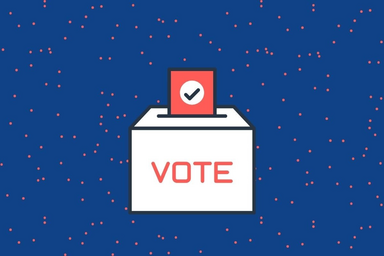Mail-in voting is one of the most important topics surrounding the 2020 presidential election, yet it’s one of the most complicated. It is also a highly debated topic on the campaign trail. While President Trump and many Republicans believe mass amounts of mail-in voting could cause election fraud, many others believe mail-in voting is absolutely necessary for a presidential election happening in the midst of a pandemic. The process and debate can be extremely confusing, especially if you’re a first-time voter. While one article cannot fully explain the complexities surrounding mail-in voting, here is a breakdown of the concept at a high level.
What Is Mail-In Voting?
It is important to note that mail-in voting and absentee voting mean the same thing, but each state decides which term to use. According to an article by the Washington Post, absentee voting is when a voter casts a ballot outside of their designated polling place. This essentially means that instead of a voter going to the polls on election day, they will receive a ballot to fill out and mail back, or take to a designated drop-off spot. People may choose to vote this way if they attend college in a different state than where they are registered to vote, are unable to physically go to the polls or for a myriad of other reasons. However, it is important to recognize that each state has its own rules and regulations regarding mail-in voting. While some states allow anyone to request a mail-in ballot, other states require you to submit a reason as to why you won’t be at the polls.
How Does the Process Work?
The process for mail-in voting is different for every state. It’s important to first make sure you are registered to vote. You can do this by going to Vote.org and filling out a quick form that will tell you your voter registration status.
Next, you will have to request to have a ballot sent to you. You can do this by again visiting Vote.org’s absentee ballot tool, which will allow you to fill out a short form to start the process. The page also has links to every state’s rules and regulations regarding mail-in voting. Some states even allow you to track your ballot through their own voting websites.
Your ballot will arrive to you in an envelope that includes your ballot, a voting checklist and any other necessary information and materials from your local municipality. It is important to follow all the directions for filling out your ballot in order for it to be counted. Some states require that you have a witness sign off that it was actually you who filled out your ballot. This can usually be anyone who isn’t running for an office on the ballot: a family member, significant other, roommate, etc.
You will then mail your ballot back to your local municipality so that it can be counted in the election. Again, each state will have different rules and dates for how and when your ballot should be mailed back. It is important that you check the times for your area so your ballot arrives back in time to be counted.
Ballot Drop Boxes
There is also another option for returning your mail-in ballots. If it has become too late for you to send your ballot back through the mail system and have it arrive in time to be counted, you can also put your ballot directly in drop boxes. These drop boxes are usually in limited locations within your county.
While the process for mail-in voting can be very confusing, it is an important tool that will be used by many voters this election. By doing a little research, you can understand the rules and regulations for your state in order to correctly request, fill out and return your ballot.
—
Edited by Sydney Keener



